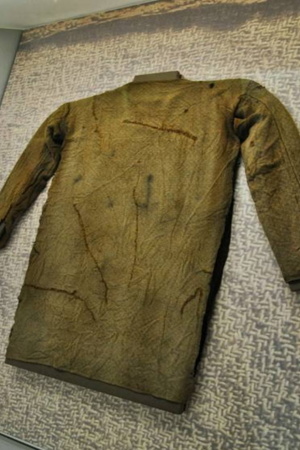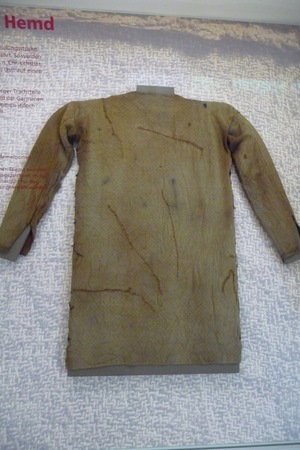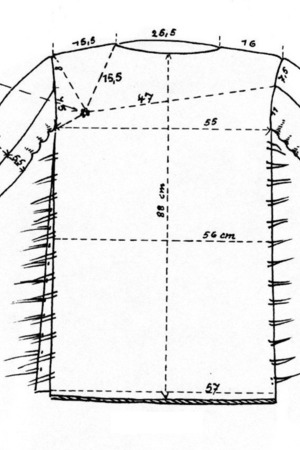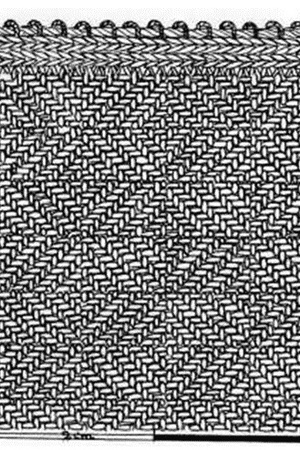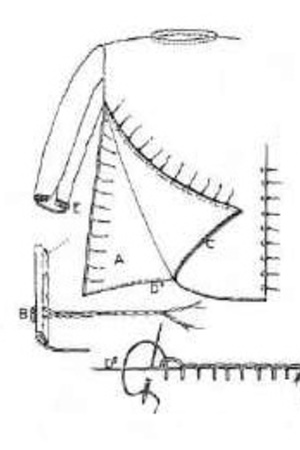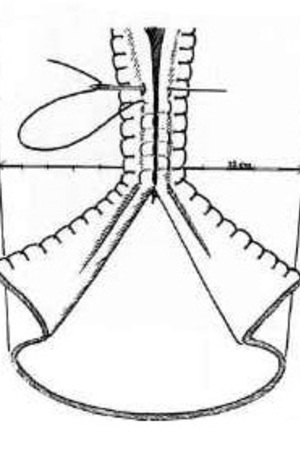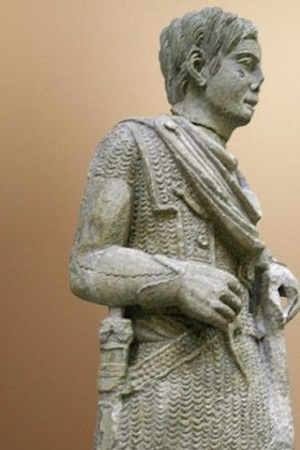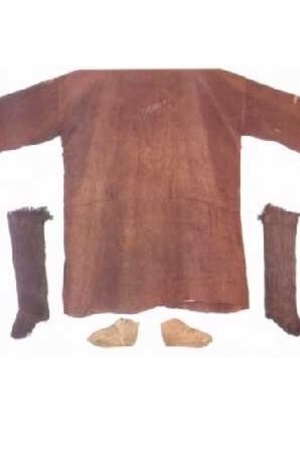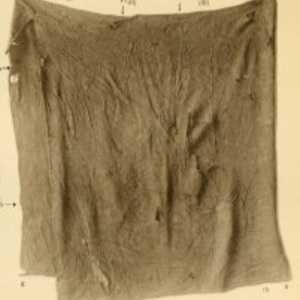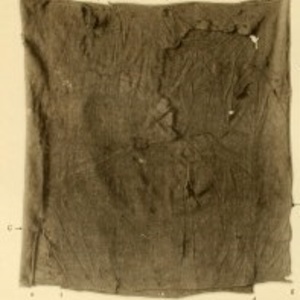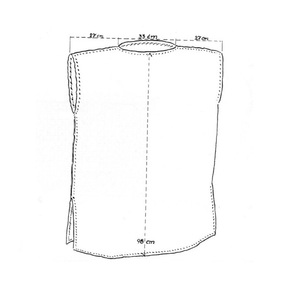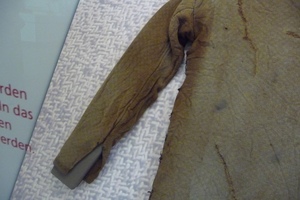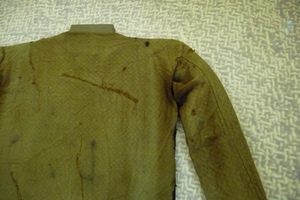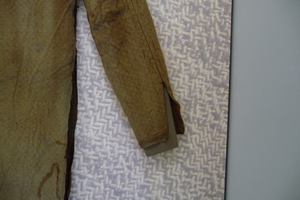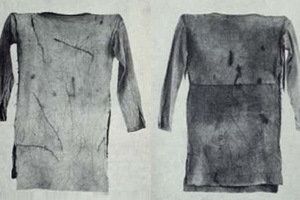Celtic shirts
The main garment worn by both Celtic men and women was the tunic, a short garment (reaching the waist) with long sleeves.
There is not a lot of archaeological evidence regarding this type of clothing. The closest geographical and temporal findings are from Schleswig-Holstein in the Thorsbjerg peat bog, where a tunic was found in 1863. Unfortunately, its dating is quite broad, ranging from the 1st century to the 5th century CE. The tunic was sewn from four pieces: front and back parts (both 54 cm wide, 86 cm and 90 cm long, respectively) and two sleeves (54 cm long, 26 cm wide at the base, tapering to 18 cm at the wrist), with a decorative trim sewn along the edge. There were folds on the back of the sleeves. Judging by the proportions, the tunic fit closely to the body when worn.
Many historians recognize the rounding of the neckline opening from the throat side, while the back part is straight without rounding, and there is no straight cut at the neckline. Some reconstructions and versions do not include any modifications for ease of wear at the neck.
All four parts of the tunic were made from the same type of fabric in terms of weaving and density. The fabric itself was twill weave wool (2/2, diamond pattern), with 10 threads interwoven on one side and from 7 to 13 threads on the other side.
In addition to the tunic from Thorsbjerg, there are other depictions, such as the statue of the Gallic warrior "Guerrier de Vachères," housed in the Calvet Museum in Avignon, France. The seams of the tunic sleeves can be seen on the statue.
There are also written sources.
Diodorus Siculus writes: "The Gauls wear remarkable clothing: tunics dyed in all sorts of colors and embroidered; trousers, which they call 'braccae'; cloaks with fastenings, striped and heavy in winter, light and often checkered in summer."
Strabo mentions that the Gauls wear tunics with sleeves that reach the middle of the thigh instead of tunics. The tunics of the nobility are embroidered with gold.
Flavius Vopiscus writes that Tetricus, a Gallic usurper whom the Emperor Aurelian led in his triumph, was dressed in a yellow-green tunic, a red chlamys, and wide braccae pants.
Shirt-dress
A dress from Le Martre de Veyr. It is something in between a peplos and a shirt. Do not let the photos mislead you - this garment is huge! It has the following dimensions and clearly cannot be classified as a regular tunic due to its size and the presence of sleeves: 1.25 m in height, 1.7 m in width, and the sleeve measures 40 cm in length. It somewhat resembles Roman tunics with sleeves from Egypt. The dress also had a 8 cm deep pleat, created with two rows of large stitches using white woolen thread. Stockings and footwear were found along with the dress. That's why it is often classified as women's clothing.
Sleeveless shirt
Again, it is not exactly a tunic as it lacks sleeves. The finding was made in Marx Etzel. Essentially, it is similar to a modern sleeveless shirt or a short tunic and was found with short trousers. It is unknown who exactly wore it. The tunic is described in two variations: with a shoulder seam and without a shoulder seam. The dimensions of the finding are: height 95 cm, width 87 cm.
Related topics
Celts, Tunic, Celtic Belt, Peplos
Literature
- Margrethe Hald. Ancient Danish textiles from bogs and burials. 1980
- War and Worship: Textiles from 3rd to 4th-century AD Weapon Deposits in Denmark and Northern Germany
- Archaeological Sewing by Heather Rose Jones

 Gallery
Gallery






